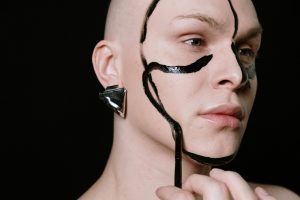Holographic Runways: Digital-Only Collections with NFT Ownership
Over the years, the world of fashion has constantly evolved and embraced new technologies, keeping up with the fast-paced demands and innovative trends of the modern era. One of the latest developments in the fashion industry is the rising popularity of holographic runways and digital-only collections with NFT ownership. With the ongoing advancements in virtual and augmented reality, fashion shows and collections are now taking a digital form, showcasing the potential of merging fashion and technology. In this article, we dive into the fascinating world of holographic runways and digital-only collections with NFT ownership, and how these are changing the fashion landscape as we know it.
The Rise of Holographic Runways
Holographic runways have been gaining attention and creating buzz in the fashion world, with several designers and fashion houses experimenting with this innovative technology. These virtual catwalks allow designers to showcase their collections through 3D holographic projections, making it possible for viewers to experience the show as if they were physically present. This eliminates the need for physical venues, models, and other resources, making it a cost-effective and sustainable alternative to traditional fashion shows.
The Benefits of Holographic Runways
The use of holographic runways brings a host of benefits to the fashion industry. Firstly, it allows designers to push the boundaries of creativity and showcase their collections in a unique and innovative manner. This creates a memorable experience for the viewers and generates excitement and buzz around the brand. Moreover, virtual fashion shows also enable designers to reach a wider global audience, as the shows can be live-streamed and viewed from anywhere in the world.
Another advantage of holographic runways is the reduction of carbon footprint. As fashion shows often involve extensive travel and large-scale production, they have a significant negative impact on the environment. By utilizing virtual technology, the fashion industry can become more sustainable and environmentally friendly.
The Concept of Digital-Only Collections
In addition to holographic runways, the rise of digital-only collections is also gaining traction in the fashion world. These collections are created entirely in the digital space and can only be accessed online. They are often accompanied by virtual fashion shows, providing viewers with an immersive experience.
One aspect that makes digital-only collections unique is that they are often accompanied by NFT ownership. NFTs, or non-fungible tokens, are unique digital assets that cannot be replicated or duplicated. When it comes to fashion, NFTs are used to verify the authenticity and ownership of digital-only collections. This gives buyers a sense of exclusivity and ownership, as they can purchase and own a one-of-a-kind digital fashion piece.
NFTs and the Future of Fashion
NFTs are revolutionizing the fashion industry, as they create new avenues for designers and consumers to interact and engage with fashion. With the growing interest in digital fashion, NFTs offer a way for designers to monetize their digital creations and for consumers to own exclusive pieces of digital fashion. This has opened up a whole new market for fashion, where NFTs are being traded for thousands of dollars, showcasing the value and potential of digital fashion.
Moreover, NFTs also offer a solution to the problem of plagiarism in the fashion industry. With digital-only collections and NFT ownership, designers can protect their creations and ensure that they are not being replicated or sold without their consent.
In Conclusion
Holographic runways and digital-only collections with NFT ownership are opening up new possibilities and changing the landscape of the fashion industry. By embracing technology, fashion designers can now showcase their collections in a whole new dimension and reach a wider audience. The integration of virtual and augmented reality in fashion is not just a passing trend, but a shift towards a more sustainable, inclusive, and innovative future for the industry.











